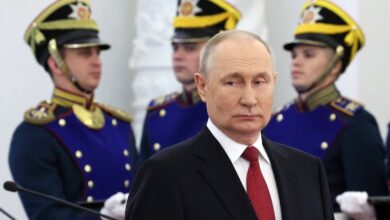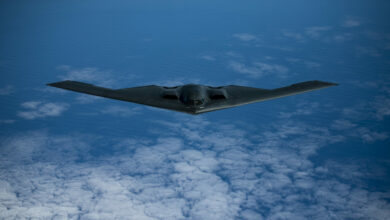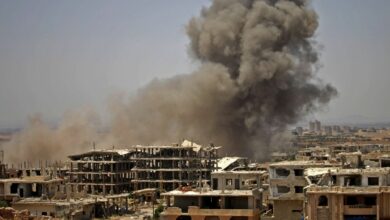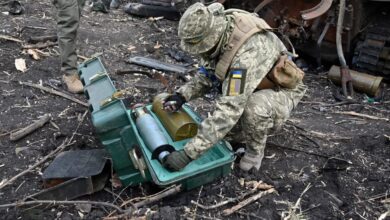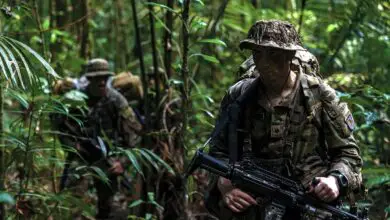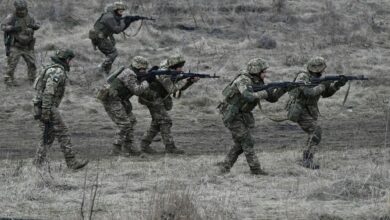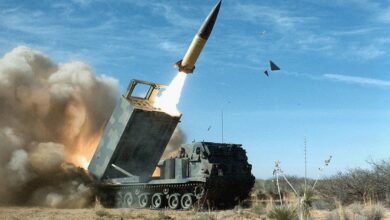New Syrian military councils are the SDF’s latest push for decentralization
The Syrian Democratic Forces announced the formation of six new local military councils over the past fortnight in an apparent move to localize military authority across the country’s northeastern autonomous region.
New military councils were announced in the cities of Tal Abyad, Kobane, Tabqa, Raqqa, Qamishli and al-Hol as part of a transition to a “new organizational structure,” according to SDF statements.
“The main goal of establishing these councils is to unify the military and security forces in the region, to greater involve local leaders in decision making and to … empower and activate the military institutions within [the SDF],” an SDF statement read.
Each council, according to statements, will consist of a “battalion command, a brigade command and directors and officers of the military offices within each district.” The SDF statement on the formation of the Raqqa Military Council also lists “local leaders” as part of the body.
Northeastern Syria is controlled by the SDF, an alliance of local militias led by the mainly-Kurdish People’s Protection Units (YPG) and Women’s Protection Units (YPJ) and supported by the U.S.-led Coalition to defeat Islamic State.
General Mazlum Abdi, commander of the SDF, said on Friday that the force numbers 70,000, with 30,000 serving as “border guards” and 5,000 in the “special forces,” ANHA News reported. The numbers could not be independently confirmed by The Defense Post. A spokesperson for CJTF-OIR told The Defense Post in January 2018 that 15,000 veteran SDF fighters would be retrained to serve as part of a 30,000-strong Syrian border security force (a plan which infuriated the Turkish government and never materialized).
The U.S. began supporting the YPG against ISIS during the militia’s breakout from Kobane in October 2014 as part of Syria’s civil war, now in its eighth year.
From the outset, American planners grappled with how to leverage the YPG’s unmatched battlefield capabilities against ISIS while allowing non-Kurdish militias a degree of autonomy.
Now, with the territorial war against ISIS finished, American officials envision an SDF more accountable to local civilian authorities, according to Nicholas Heras, a fellow at the Center for a New American Century in Washington.
“The idea is that the civilian councils have the opportunity to influence the decision-making of these military councils,” Heras explained. “They are not part of the broader counter-ISIS campaign anymore. They’re now part of a process in the system to provide local security and prevent the reemergence of ISIS.”
American officials have also been in negotiations with the Turkish government about turning military authority over to local forces in ethnically diverse areas near the Syria-Turkey border.
Turkish President Recep Tayyip Erdogan threatened repeatedly over the last year to invade northern Syria in order to clear the border area of YPG. Erdogan has also specifically threatened the strategic cities of Tal Abyad and Manbij, which link the cantons of Syria’s historic Kurdish areas.
Ankara considers the YPG to be the Syrian branch of the Kurdistan Workers’ Party, or PKK, and especially objects the presence of non-Syrian YPG cadre near its borders.
Those threats died down following Washington’s offer to help establish a buffer zone along the Syrian-Turkish border. U.S. Special Envoy to the anti-ISIS Coalition James Jeffrey has expressed some support for Turkey’s position that YPG evacuate the proposed border zone.
The new local military councils allow Washington to “try to make the argument to Turkey that there are places where you can apply the Manbij roadmap in a way that is systematic and demonstrates that the YPG doesn’t need to be involved in every little decision that’s made,” Heras said.
American and Turkish officials agreed in June 2018 to “jointly supervise” the withdrawal of YPG cadre from Manbij by the end of that summer as part of that plan, Turkish Foreign Minister Mevlut Cavusoglu said at the time.
The Manbij Military Council insists YPG cadre left the city more than two years ago, but the Turkish government disagrees.
Last week, Cavusoglu said the U.S. has failed to uphold its end of the Manbij agreement.
It was not immediately clear what role the YPG or YPJ may play in the new military councils. Both Mervan and YPG spokesperson Nuri Mahmoud declined to comment on the matter. SDF media chief Mustafa Bali did not return requests for comment.
Local YPG fighters will likely participate in the new councils, at least in Kurdish-majority border cities such as Kobane, according to Sinam Mohamad, the Syrian Democratic Council’s representative in Washington.
“YPG are the base, actually, of this SDF,” Mohamad said. “They are well trained, they are from the local people, they are not from the outside. They did not come from Turkey or any other places, as [the Turkish government] claims. They are from the region,” she said at an event in Washington on Friday.
Tal Abyad, a multi-ethnic town on the border, may be managed differently, experts say. But that “is a military decision, not a political decision,” according to Mohamed.
The YPG has made significant progress recruiting non-Kurdish fighters in Tal Abyad. A YPG commander told The Defense Post in December 2018 that his office had recruited some 500 local fighters in the week since Donald Trump announced the imminent U.S. withdrawal from Syria.
Some local recruits may leave the YPG in order to join the Tal Abyad Military Council, Heras suggested.
“The idea that you’re going to remove overnight the influence of the YPG over security developments in northeastern Syria is fanciful,” Heras said.
“This whole structure is a work in progress,” he said.
Mervan Qamishlo of the SDF’s Military Media Command denied the formation of the new councils in Tal Abyad and Kobane had anything to do with the Turkish border crisis.
“Of course there are considerations. There are Turkish sensitivities on the border between northern Syria, Rojava, and the Turkish state,” he said, adding, “The SDF is always trying to avoid any provocation with the Turkish state.”
“The benefit of these local military councils in each region is the presence of a greater number of commanders from the local area so that they can administer their own areas, particularly the Arab regions, on their own,” he explained.
These councils are just the beginning, according to Mervan. “Military councils will be established in every area, in all cantons,” he said. “Stability and security are their first priority.”
Three sources within or close to the SDF said several other local military councils are currently in the works, including one in Hasakah.
Abdi said on Friday that 15 new military councils will eventually be formed, according to ANHA.
The SDF began preparing its transition into an internal security force even before defeating ISIS’s territorial caliphate with the support of the Coalition in March.
“The military councils are the decision-making center. Their primary task is to protect the area and provide assistance to its people,” Riad Khamis al-Khalaf, the commander of the Tal Abyad Military Council said last week.
The decentralization may also ease an eventual re-integration of the SDF into the Syrian government’s military system, Heras said.
That has long been the vision of the U.S. military, Heras said. North and East Syrian officials have expressed willingness to work towards eventual military integration into forces under Damascus’ sway.
But Trump’s announcement in December 2018 that all American troops would withdraw from Syria left the SDF no leverage to negotiate a political agreement with the regime.
Jeffrey stated as recently as May that the Trump administration has no intention to fulfill the requests of the leaders of the autonomous administration in Northeast Syria to be included in the Geneva peace talks.
The Turkish government has threatened for years to withdraw opposition groups under its influence from the Geneva talks if the SDF is brought to the negotiation table.
“Fundamentally the U.S. policy isn’t to create the SDF and the Self Administration authority as an autonomous entity,” Heras said.
“Rather than having one standing force, a network of local security bodies is more easily integrated in a step-by-step process,” he said.
Abdi laid out his side’s conditions for a settlement with the Assad regime on Friday.
“There are two main requirements in the process of negotiating with the regime that will not be waived,” ANHA quoted the top SDF commander as saying.
“The first is to recognize the Self Administration, and the second is to preserve the autonomy of Syrian Democratic Forces.”


